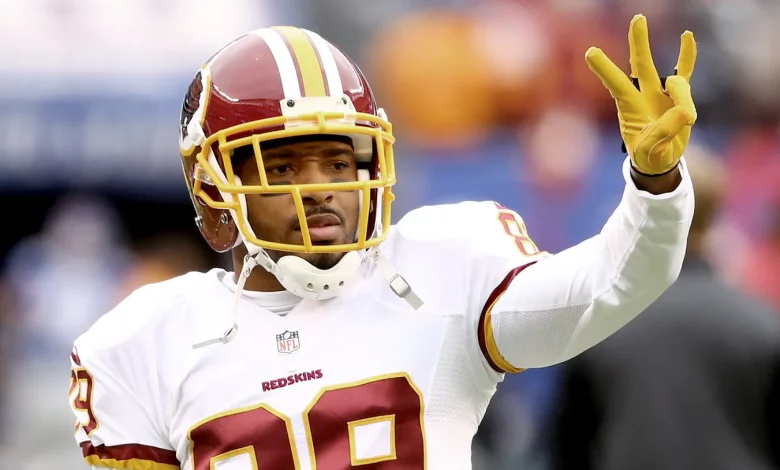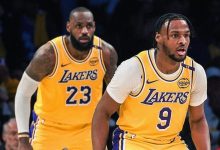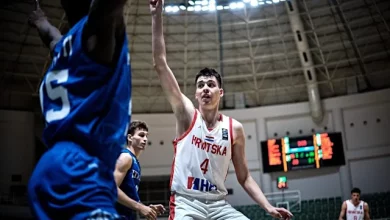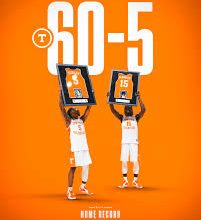Santana Moss was electric at The U ⚡️ A game-breaking WR & returner, he became Miami’s all-time leading receiver and a threat to score every time he touched the ball. Biletnikoff finalist. All-American. Pure speed, pure swagger.

Long before he lit up NFL fields on Sundays, Santana Moss turned heads and broke hearts at the University of Miami. At a time when “The U” was rebuilding its swagger and identity on the national stage, Moss was the lightning bolt they needed—a game-breaking wide receiver, a fearless return specialist, and a human highlight reel who brought the Orange Bowl crowd to its feet every time he touched the ball.
Santana Moss wasn’t just fast—he was different. The kind of speed that couldn’t be taught, coached, or replicated. He moved like he was playing in another dimension, cutting against the grain, shifting gears mid-route, and turning broken plays into symphonies of chaos and brilliance. If defenses blinked, they lost him. And if they lost him, they were six points down.
When Moss arrived at Miami in 1997, the program was still climbing out of the shadows cast by NCAA sanctions and a national reputation that had been as polarizing as it was powerful. Head coach Butch Davis was trying to rebuild a dynasty brick by brick, looking for hungry talent with something to prove. Moss fit the bill perfectly. Undersized but unforgettable, he came out of Miami’s Carol City High School with a chip on his shoulder and elite track speed that belied his three-star status. Not many schools saw the star he would become. Miami did.
At just 5-foot-10 and around 180 pounds, Moss didn’t have the prototypical frame of a dominant outside receiver. But what he lacked in size, he more than made up for with explosion, attitude, and an instinctive feel for the game. He redshirted his first year, but once he hit the field in 1998, the Hurricanes quickly realized they had a Ferrari in the garage.
That season, Moss wasted no time announcing himself, finishing with over 600 receiving yards and becoming one of the most dangerous return men in the nation. Every time he lined up, it felt like something special was about to happen. Miami fans would rise slightly in their seats, holding their breath. The electricity he brought was palpable. He didn’t just make plays—he made statements.
In 1999, Moss took the next step, becoming the focal point of Miami’s passing game. His chemistry with quarterback Kenny Kelly was evident, and defensive backs simply couldn’t match his acceleration. Slants became sprints, screens became track meets, and every vertical route was a threat to end in a touchdown. He posted 54 catches for 899 yards and six touchdowns that season while leading the nation in punt return average. It was clear Moss wasn’t just fast—he was a technician. His route running sharpened, his timing improved, and his confidence began to shine through on every snap.
By his senior year in 2000, Santana Moss had become a full-blown superstar and the spiritual heartbeat of a Miami program on the verge of greatness. With Ken Dorsey now under center, Moss had a quarterback who could consistently hit him in stride. And once that happened, defenders were toast. He led the team with 1,604 all-purpose yards and set Miami’s career record for receiving yards, a mark that stood as a testament to both his production and his big-play consistency.
But stats, as impressive as they were, never told the full story of Santana Moss. He was a culture-setter, a tone-setter, a leader who never needed to scream but always showed up. His mantra—”Big-time players make big-time plays in big-time games”—became gospel in Coral Gables, especially when Miami needed someone to shift momentum. And no one flipped games faster than Santana.
Against bitter rival Florida State in 2000, Moss delivered a performance for the ages. In a game packed with NFL-caliber talent on both sidelines, it was Moss who emerged as the difference-maker. He finished with 115 receiving yards, including a go-ahead touchdown late in the fourth quarter, then sealed the win with a game-breaking punt return that sent the crowd into delirium. It was the return of The U, personified in one man’s burst and brilliance. That win marked a turning point for the program, and Moss was the face of that moment.
His senior season accolades poured in—first-team All-American honors, Big East Offensive Player of the Year, and a finalist nod for the Biletnikoff Award, given to the nation’s top wide receiver. It was a fitting recognition of the chaos he caused and the fear he struck in special teams coordinators across the country. Moss didn’t just elevate the offense—he impacted field position, defensive coverages, and the confidence of every opponent.
Ask anyone who lined up against him, and they’ll tell you: you couldn’t simulate Santana Moss in practice. No scout team player could mimic his get-off, his hips, or his tempo. He was simply one-of-one.
In four years, Moss hauled in 143 receptions for 2,546 yards and 19 touchdowns while also recording over 1,500 return yards and multiple scores in the return game. He left Miami as the school’s all-time leading receiver and one of the most dynamic all-purpose players in its storied history. And in doing so, he helped pave the way for a tidal wave of greatness that would arrive after him.
The 2001 Miami Hurricanes are often remembered as the greatest college football team ever assembled, and rightly so. But their return to dominance wasn’t spontaneous—it was built on the foundation laid by players like Moss, who carried the program through its most uncertain years and passed the torch with pride. His leadership helped shape the locker room culture that Ed Reed, Andre Johnson, Clinton Portis, and others would inherit.
What separated Moss, beyond the talent and the toughness, was his authenticity. He was South Florida through and through—born in Miami, raised in the fire, and always repping the 305 with pride. That authenticity resonated. He wasn’t just a Cane—he was the Cane, embodying the rebirth of a brand that had once ruled college football and was now hungry to reclaim its throne.
And even after his Miami days, Moss never stopped repping The U. In the NFL, where he carved out a stellar career with Washington, the Jets, and others, he remained a proud ambassador of the program. He wore the “U” on his sleeve, in his interviews, and on his cleats. In every touchdown celebration, there was a trace of Coral Gables. And for fans of that early-2000s Miami resurgence, Santana Moss was the spark that lit the flame.
Years later, when asked about what made his time at Miami so special, Moss didn’t talk about the awards or the records. He talked about the grind. The bond. The brotherhood. The legacy. He talked about what it meant to carry the expectations of a proud but battered program on his shoulders—and not only live up to them, but exceed them.
For the kids growing up in Miami’s inner city, Moss became a symbol of what was possible. He wasn’t the biggest. He wasn’t handed anything. But he turned speed, swagger, and work ethic into something immortal.
Now, whenever conversations turn to the greatest Canes of all time, his name is never far from the top. Not just for what he did between the white lines, but for how he made fans feel. Every time the ball was in his hands, you held your breath. He made you believe something amazing was about to happen. And more often than not, it did.
Even as the game has evolved and newer generations of stars have emerged, the legend of Santana Moss still burns bright in Miami football lore. He wasn’t just a highlight machine—he was a symbol of resilience, pride, and performance. A player who showed that flash can have substance, and that swagger, when backed by work, can become greatness.
Santana Moss didn’t just play for The U. He helped resurrect it.
And in doing so, he didn’t just leave a mark—he left a blueprint.









